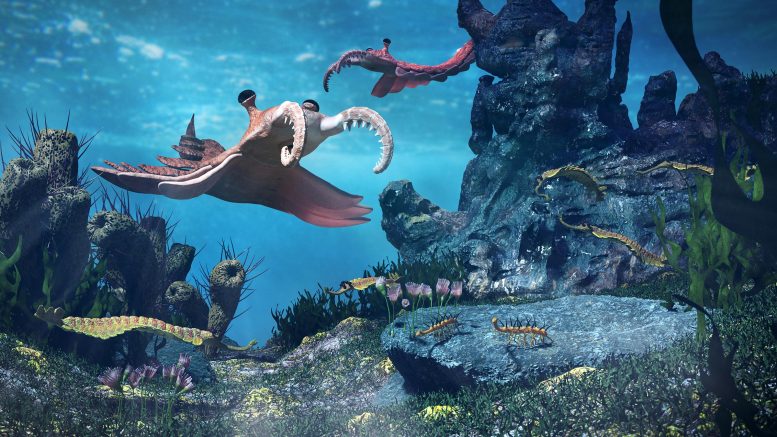
Contrary to previous beliefs, the Avalon explosion, marking the rise of multicellular organisms, wasn’t triggered by increased oxygen levels, according to new research. This study, analyzing ancient rocks, reveals that oxygen levels were lower than today’s when these life forms emerged. This finding challenges existing theories about the origin of life on Earth, suggesting that low oxygen levels might have actually promoted the development of these organisms.
No, oxygen didn’t catalyze the swift blossoming of Earth’s first multicellular organisms. The result defies a 70-year-old assumption about what caused an explosion of oceanic fauna hundreds of millions of years ago.
Between 685 and 800 million years ago, the Avalon explosion — a forerunner era of the more famed Cambrian explosion — marked the emergence of multicellular organisms in Earth’s oceans. Prior to this era, the world was dominated by single-celled amoeba, algae, and bacteria for over 2 billion years. The Avalon explosion saw a sudden surge in biodiversity, with sea sponges and other complex multicellular organisms replacing their simpler, single-celled counterparts.
Previously, it was postulated that this significant leap in evolutionary complexity was triggered by increased oxygen levels. However, this is being disproved by recent research by the University of Copenhagen, in collaboration with the Woods Hole Oceanographic Institute, the University of Southern Denmark, and Lund University, among others.
Challenging Prevailing Views on Oxygen’s Role
By analyzing the chemical composition of ancient rock samples from an Omani mountain range, the researchers have been able to “measure” oxygen concentrations in the world’s oceans from when these multicellular organisms appeared. Defying expectations, the result shows that Earth’s oxygen concentrations had not increased. Indeed, levels remained 5-10 times lower than today, which is roughly how much oxygen there is at twice the height of Mount Everest.
“Our measurements provide a good picture of what average oxygen concentrations were in the world’s oceans at the time. And it’s apparent to us that there was no major increase in the amount of oxygen when more advanced fauna began to evolve and dominate Earth. In fact, there was somewhat of a slight decrease,” says Associate Professor Christian J. Bjerrum, who has been quantifying the conditions surrounding the origin of life for the past 20 years.
Reshaping Our Understanding of Life’s Origins
The new result puts to rest a 70-year research story that advances the centrality of higher oxygen concentrations in the development of more advanced life on our planet.
“The fact that we now know, with a high degree of certainty, that oxygen didn’t control the development of life on Earth provides us with an entirely new story about how life arose and what factors controlled this success,” says the researcher, adding:
“Specifically, it means that we need to rethink a lot of the things that we believed to be true from our childhood learning. And textbooks need to be revised and rewritten.”
There remains much that the researchers don’t know, as well as and a plethora of controversy. Therefore, Bjerrum hopes that the new result can spur other researchers around the world to reconsider their previous results and data in a new light.
“There are many research sections around the world, including in the United States and China, that have done lots of research on this topic, whose earlier results may shed important new details if interpreted on the basis that oxygen didn’t drive the development of life,” says the researcher.
Fossils from Oman
In the new study, the researchers analysed rock samples from, among other places, the Oman Mountains in northern Oman. While quite high and very dry today, the mountains were on the seabed during the Avalon explosion’s rapid blossoming of organism diversity.
The researchers have had their findings confirmed in fossils from three different mountain ranges around the world: the Oman Mountains (Oman), Mackenzie Mountains (NW Canada) and the Yangtze Gorges area of South China.
Over time, clay and sand from land are washed into the sea, where they settle into layers on the seabed. By going down through these layers and examining their chemical composition, researchers can get a picture of ocean chemistry at a particular geologic time.
The analyses were performed using Thallium and Uranium isotopes found in the mountains, which the researchers were able to extract data from, and in doing so, calculate oxygen levels from many hundreds of millions of years ago.
Oxygen Absence: A Catalyst for Life?
So, if not extra oxygen, what triggered the era’s explosion of life? Perhaps the exact opposite, explains the researcher:
“It’s interesting that the explosion of multicellular organisms occurs at a time with low concentrations of atmospheric and oceanic oxygen. That indicates that organisms benefited from lower levels of oxygen and were able to develop in peace, as the water chemistry protected their stem cells naturally,” says Christian J. Bjerrum.
According to the researcher, the same phenomenon has been studied in cancer research, in the stem cells of humans and other animals. Here, colleagues at Lund University observed that low oxygen levels are crucial for keeping stem cells under control until an organism decides that the cell ought to develop into a specific type of cell, such as a muscle cell.
“We know that animals and humans must be able to maintain low concentrations of oxygen in order to control their stem cells, and in so doing, develop slowly and sustainably. With too much oxygen, the cells will develop, and in the worst case, mutate wildly and perish. It is far from inconceivable that this mechanism applied back then,” concludes Christian J. Bjerrum.
Reference: “Widespread seafloor anoxia during generation of the Ediacaran Shuram carbon isotope excursion” by Chadlin M. Ostrander, Christian J. Bjerrum, Anne-Sofie C. Ahm, Simon R. Stenger, Kristin D. Bergmann, Mohamed A. K. El-Ghali, Abdul R. Harthi, Zayana Aisri and Sune G. Nielsen, 8 May 2023, Geobiology.
DOI: 10.1111/gbi.12557

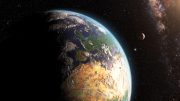




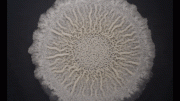
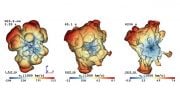
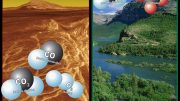
Ashley the first paragraph that mentions that when cellular life started there’s a doctor that already compared tons of comparable DNA among all animals including sponges and his research shows through DNA comparison that life started from of all things the sponge I know that sounds funny but I researched it too and found out to be highly plausible that the first life even leading to the first backbone in sea life was the sponge there’s even a DVD narrated by the actor Peter Coyote and you should try and get a hold of it and it’s about life and how it started and they examine how the sea sponge how it eats how it thrives and how long they theorize it first developed and the coincides with the first paragraph of how life really started in your article here compare those two and suggest those two and you’ll have a lot more plausibility than all the other theories after all meteors crashing into the ocean creates peptides the meteors crashing into the elements that exist the multi elements on the periodic table of existence sea water back then and a crashing of meteors and comments would have contributed to creating peptides which then the next step would have been long chain amino acids okay talk to you later people this is Dr Charles Meridian
This is Don Cheadle. It looks like a good day to see sci-hub.site or whatever isn’t interdicted today for the full article in a bit, after all even archea have to process some common oxidative good into their being and metabolisms, I wonder what can it be? Oops! All sulfides?
These scientists are wrong about oxygen. A very plausible scientific explanation for the Cambrian “explosion” of complex life is provided in a paper I wrote: “Biochemical Keys to the Origin of Complex Life.” in a book, Life inn the Universe, 1981.
If Dr Charles Meridian wants his comment to be taken seriously then he should pay more attention to his English grammar.